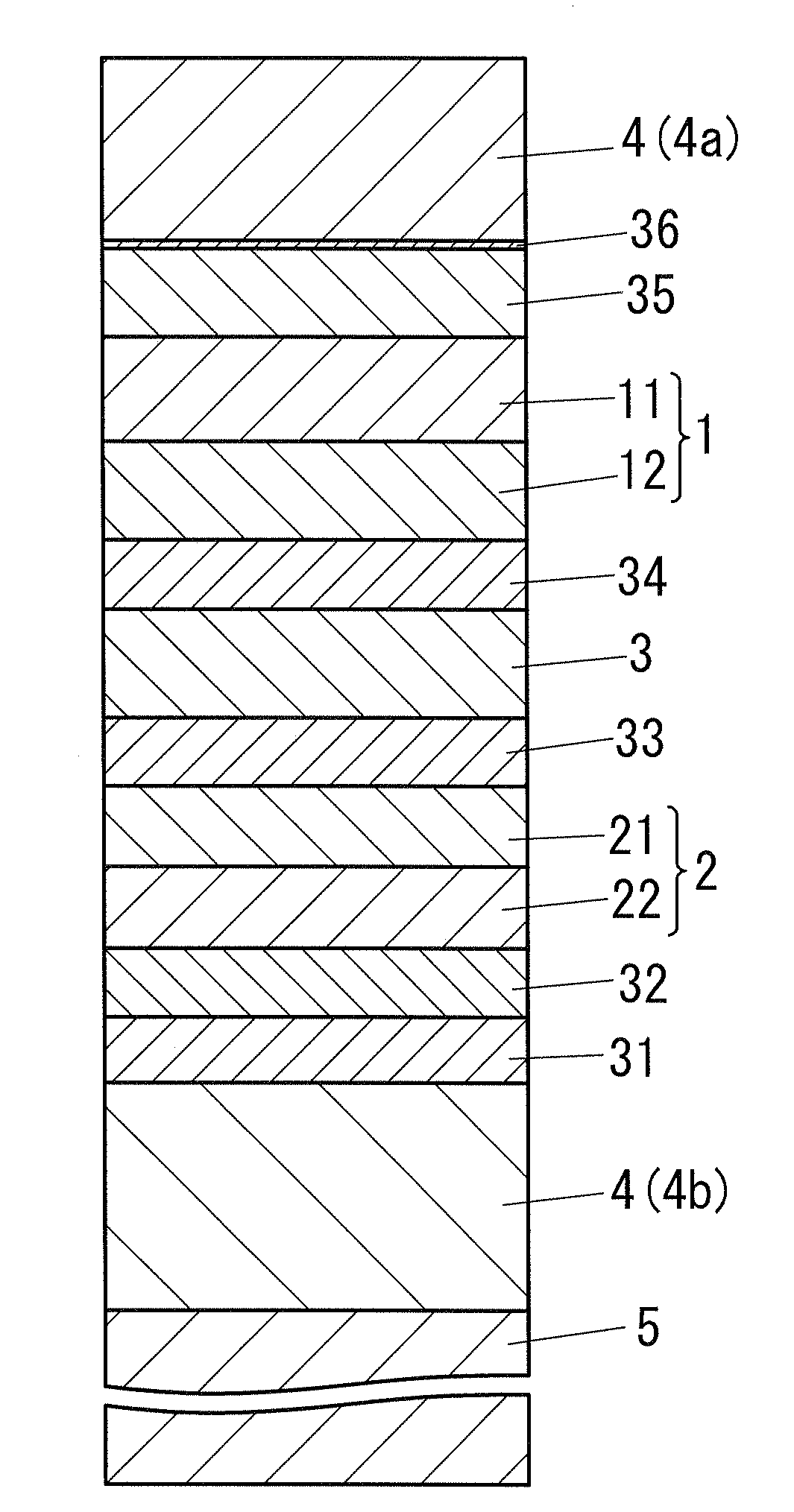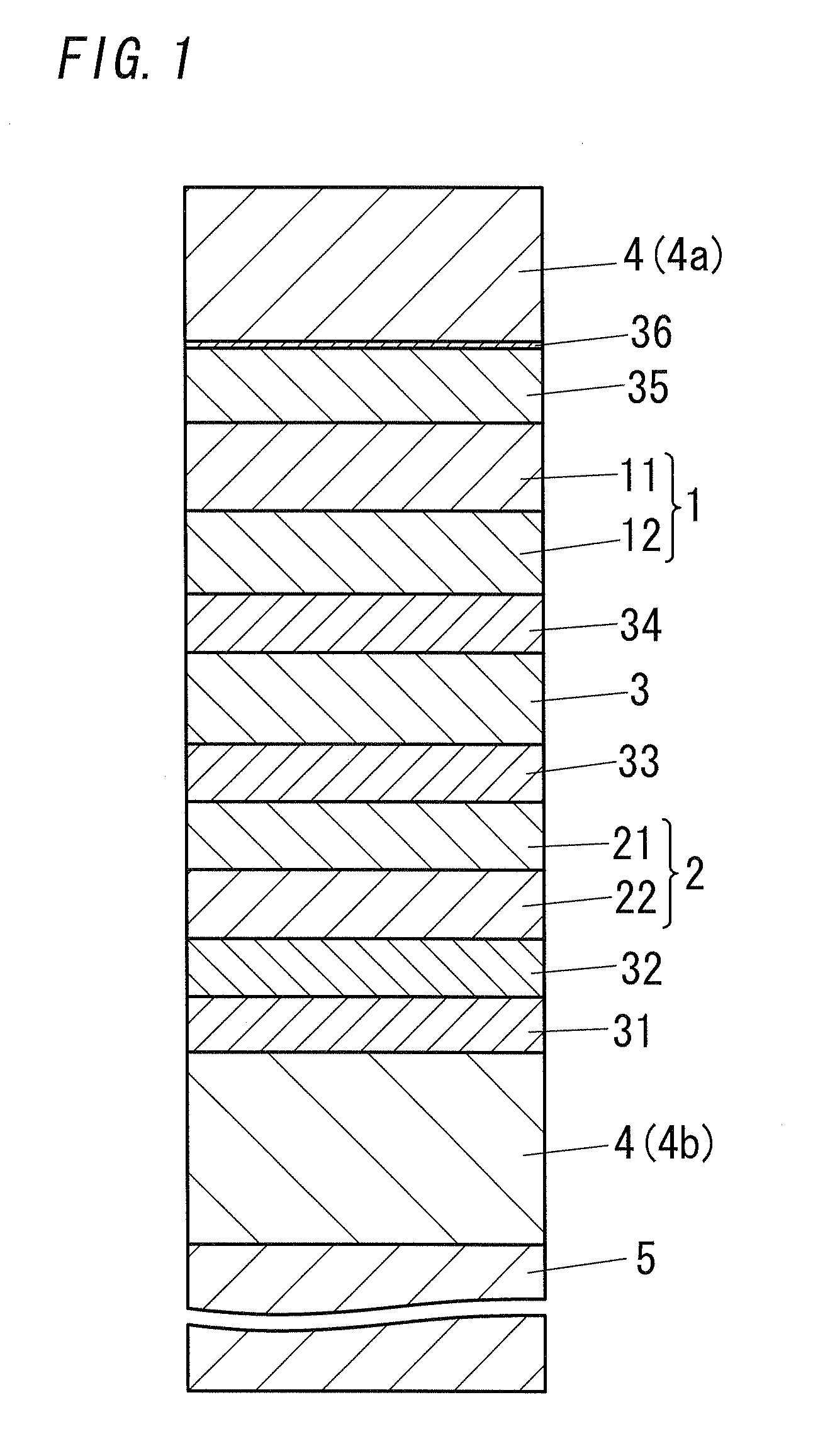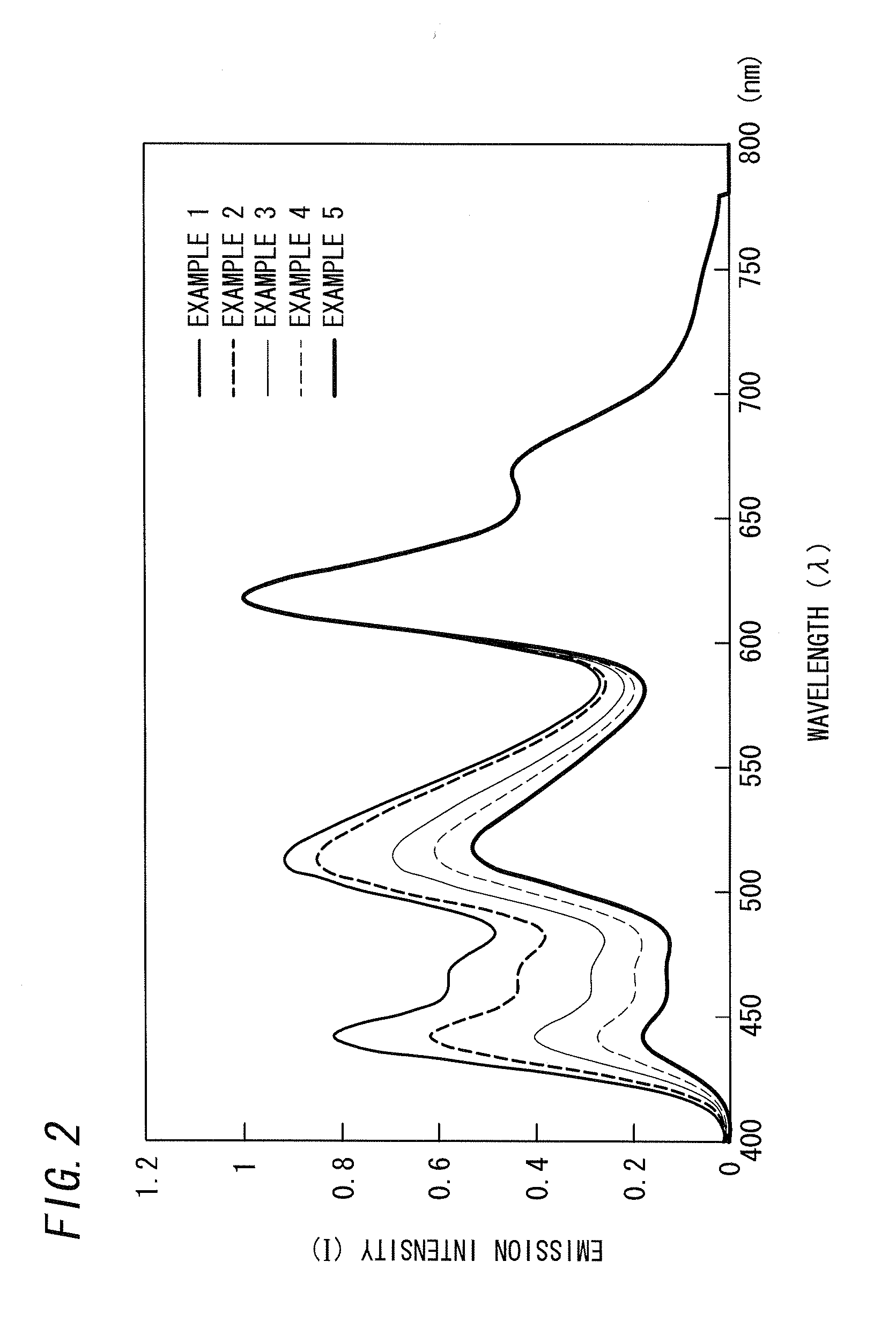Organic electroluminescent element
a technology of electroluminescent elements and organic materials, which is applied in the direction of electroluminescent light sources, organic semiconductor devices, thermoelectric devices, etc., can solve the problems of difficult to achieve emission in these various hues of white without incurring changes in chromaticity within the range of jis standards, and achieve high emission efficiency, good emission balance, and long life
- Summary
- Abstract
- Description
- Claims
- Application Information
AI Technical Summary
Benefits of technology
Problems solved by technology
Method used
Image
Examples
examples
[0089]Examples of the present invention are explained next.
[0090][Production of Organic Electroluminescent Elements]
[0091]Organic electroluminescent elements of examples and comparative examples were produced according to the procedure below.
[0092]The anode 4b having a sheet resistance of 10 Ω / square was formed, by sputtering of ITO (indium-tin oxide) onto a 0.7 mm-thickness glass substrate, as the substrate 5, to produce a glass substrate provided with ITO. The glass substrate provided with ITO was subjected to ultrasonic cleaning for 15 minutes with acetone, pure water and isopropyl alcohol, and was then dried and cleaned using UV ozone. The glass substrate provided with ITO was then set in a vacuum vapor deposition apparatus, and various organic or inorganic layers were sequentially vapor-deposited, through resistance heating, under a degree of vacuum of 5×10−5 Pa or less. Lastly, Al was vapor-deposited to form the cathode 4a.
[0093](Device Structure of the Organic Electrolumines...
examples 1 to 5
[0094]The device structure (layer build-up) and film thickness of the various layers are given below. The layer build-up in Examples 1 to 5 is identical to that of FIG. 1. However, the interlayer 3 comprises two layers, namely a first layer and a second layer.
Substrate 5: glass substrate (0.7 mm)
Anode 4b: ITO (150 nm)
Hole injection layer 31: CuPc (30 nm)
Role transport layer 32: The (30 nm)
Blue fluorescent light-emitting layer 22: TBADN: TBP: NPD (X nm)
Green fluorescent light-emitting layer 21: Alq3: C545T (Y nm)
Electron transport layer 33: BCP (30 nm)
Interlayer 3 (first layer): BCP: Li (10 nm)
Interlayer 3 (second layer) ITO (10 nm)
Hole transport layer 34: TPD (30 nm)
Red phosphorescent light emitting-layer 12: CBP: Btp2Ir(acac) (α nm)
Green phosphorescent light emitting-layer 11: CSP: Ir(ppy)3 (β nm)
Electron transport layer 35: BCP (20 nm)
Electron injection layer 35: LiF (1 nm)
Cathode 4a: Al (80 nm)
[0095]The various light-emitting layers in the above organic electroluminescent element...
examples 6 to 10
[0104]The organic electroluminescent elements in Examples 6 to 10 were produced in the same way as in Examples 1 to 5, but herein the green fluorescent light-emitting lever 21 of the fluorescent light unit 2 in the organic electroluminescent elements of Examples 1 to 5 was as follows.
[0105]Green fluorescent light-emitting layer 21: rubrene (Y nm)
[0106]In the green fluorescent light-emitting layer 21, a light-emitting layer host Alq3 was doped with 2% of a green emitting dopant: rubrene. The green fluorescent light-emitting layer 21 utilizes rubrene, which gives rise to visually yellow emission, and thus is also referred to as a yellow fluorescent light-emitting layer. The film thicknesses are as shown in Table 1.
PUM
 Login to View More
Login to View More Abstract
Description
Claims
Application Information
 Login to View More
Login to View More - R&D
- Intellectual Property
- Life Sciences
- Materials
- Tech Scout
- Unparalleled Data Quality
- Higher Quality Content
- 60% Fewer Hallucinations
Browse by: Latest US Patents, China's latest patents, Technical Efficacy Thesaurus, Application Domain, Technology Topic, Popular Technical Reports.
© 2025 PatSnap. All rights reserved.Legal|Privacy policy|Modern Slavery Act Transparency Statement|Sitemap|About US| Contact US: help@patsnap.com



